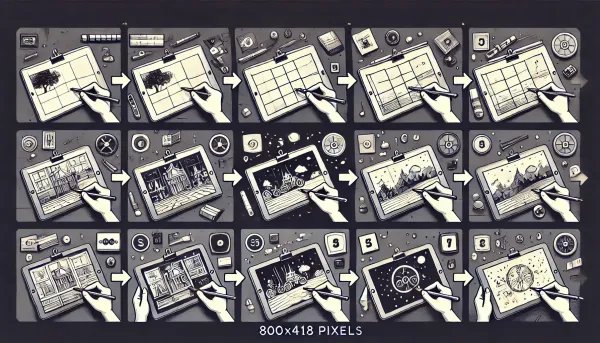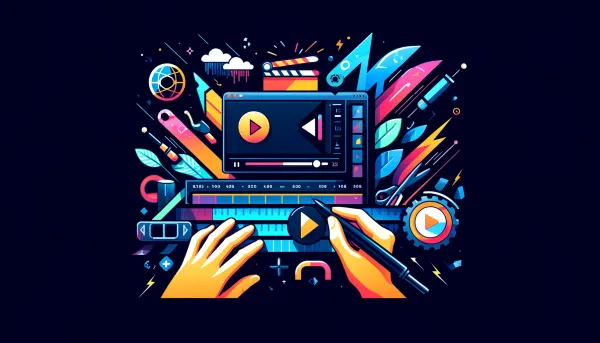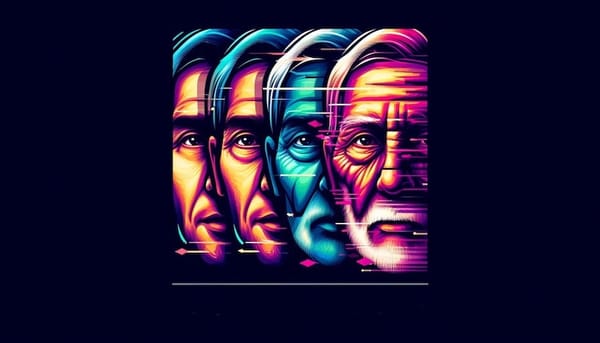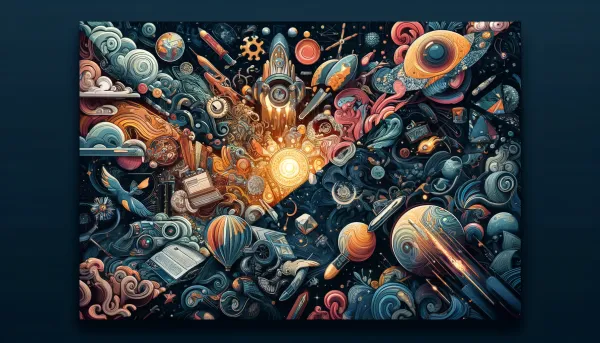What is a Deepfake? Comparison with Other Generated Media
Controversial, yet impressive at the same time.
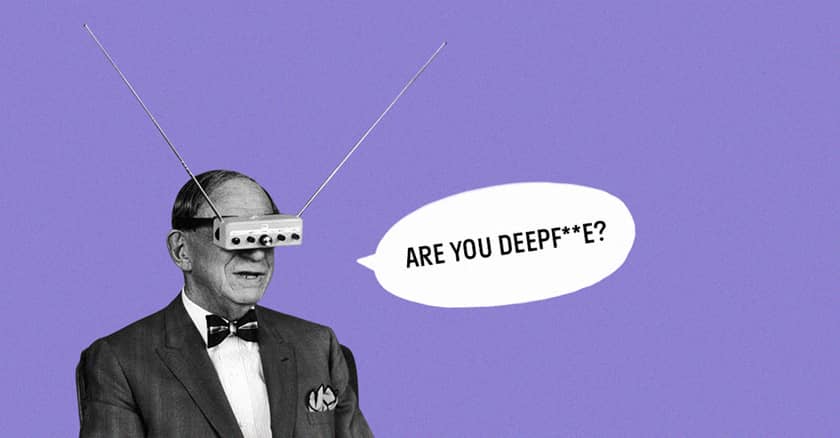
The concept of deepfake has undergone its own evolution. When it first appeared, people were highly cautious about anything associated with deep learning technologies due to the unknown and fear of the new. Today, as AI tools have become even more democratized, this term no longer triggers such intense discussions. However, it still lingers on the horizon and remains an important aspect of modern media literacy. Deepfakes have piqued our interest and also found their way into pop culture.
But what is a deepfake exactly, and can you just make one at home? Join us as we dive into the exciting world of artificial intelligence as we peel back the layers of this new – and sometimes controversial – art form.
What is a Deepfake
Imagine a scenario where you could seamlessly reproduce the appearance of any person on video to give the impression that they said or did something they never did. This does, in fact, exist, and it’s called a deepfake. So, what is deepfake technology? “Deepfake” is a combination of the words “deep learning” and “fake.” Deep learning is a method of artificial intelligence (AI) that is highly effective at recognizing patterns in data inspired by how the human brain works.
Initially, deepfake technology was used for relatively innocuous purposes, such as replacing Nicolas Cage’s face with other actors in movies as a fun meme. However, it didn’t take long for people to recognize the potential for both creative and unethical applications of this technology.
The term ‘deepfake’ actually originated on Reddit in 2017 by a user who used machine learning to produce fake nude celebrity photographs. The name deepfake was then collectively used to refer to any synthesized image or video. Occasionally, people misuse the word as a general term, but it only applies to content that is created by deep learning technology and is intended to deceive individuals.
Deepfakes vs. Synthetic Media
It is important to note that deepfakes are just one subset of a larger category of synthetic media.
So, let's explore what is a deepfake video.
Deepfakes specifically refer to the manipulation of video, audio, and images. A deepfake video is one in which artificial intelligence is used to replace or change the appearance and voice of a person in the video, creating a highly convincing but potentially deceptive piece of content.
Additionally, it is also important to point out that not all synthetic media is intended for malicious and antithetical purposes. In fact, synthetic media can be great for various positive applications, such as film, where through the power of CGI, we can transport ourselves into different time periods and dimensions. There are also video games and virtual reality, which create fun, immersive experiences for the player.
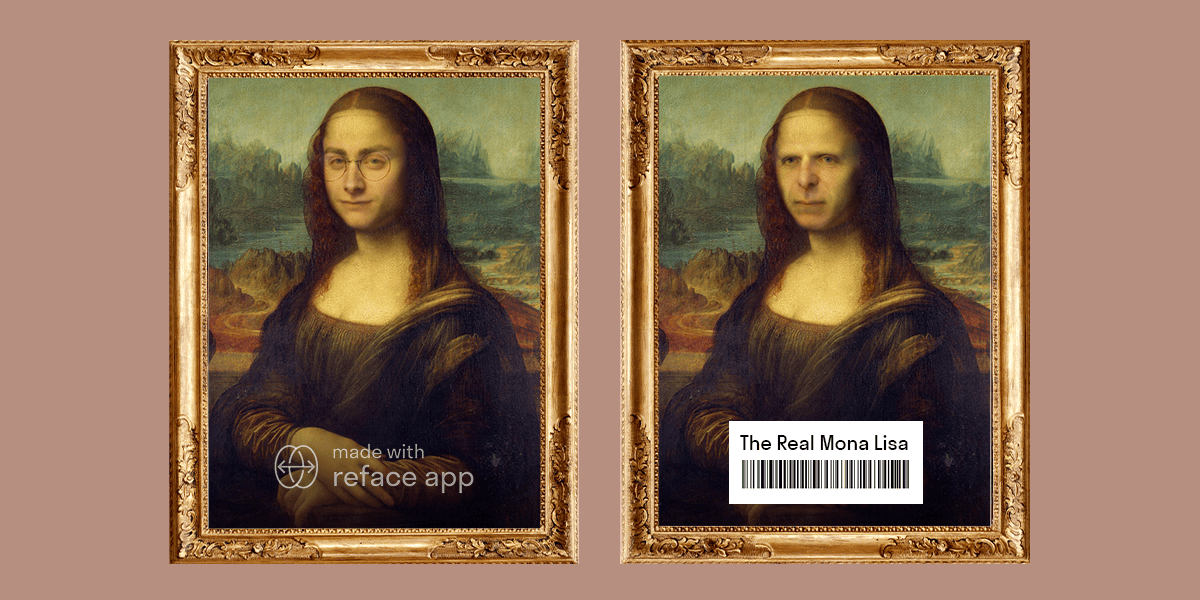
So, while deepfakes have gained infamy due to their potential to be used in nefarious ways, we want to make it clear that synthetic media, as a whole, is a fantastic tool that can bring out the creative side of anyone – as long as it’s used in a way that’s not intended to harm anyone else.
What Technology is Needed to Create a Deepfake
Creating a high-quality, convincing video deepfake is not as easy as you might think, despite how technologically advanced our computers and tools are. It takes a lot of high-level technical expertise, powerful computers, and oftentimes, a whole team of professionals, including learning experts, post-production specialists, and sometimes even actors.
We’re not going to dive into the step-by-step process of exactly how it works here, but overall, it involves tools like GAN neural network technology, convolutional neural networks, autoencoders, and various other sophisticated technologies that experts are highly trained in.
What we’re going to focus on, instead, is reiterating the fact (once again!) that the creation of deepfakes not only involves highly-skilled experts using complex tools that are unknown to the average computer-user, but also time – in order to create an undetectable deepfake, you would need several weeks of training, perfecting, and in some cases, scheduling re-shoots with actors.
How Are Deepfakes Usually Used
We now know that deepfakes are associated with deception and misinformation, but they also have the potential to be used for more positive and productive purposes.
Let’s explore some ‘good’ deepfake uses:
- Film and television: Deepfake technology has definitely found its place in the world of entertainment. Industry professionals use it for various purposes, such as aging or de-aging film stars, resurrecting deceased actors, or changing the background and set design.
- Education: Take language learning for example. Deepfake technology is so advanced that it could create a highly realistic tutor or conversational partner when you’re learning a new language. Additionally, the learner is able to practice speaking and listening skills by mimicking their virtual partners.
- Accessibility: Deepfake technology can be used to create sign language interpreters or generate personalized avatars for individuals with disabilities, improving accessibility for those who are deaf or hard of hearing.
- Customer service: It can be used to revolutionize the customer service experience by enabling the creation of customizable responses for different customer needs. This thereby allows businesses to automate the process and create more tailored communication strategies.
Difference Between Deepfakes and Shallowfakes
Although deepfakes are generally the most well-known type of manipulated media, it’s important to remember that not all misleading videos fall into the ‘deepfake’ category. Here, we will introduce you to a new term: shallowfakes.
Shallowfakes are also a type of synthetic media, but the differences between deepfakes and shallowfakes lie in the degree of complexity in their creation.
Here’s a breakdown of the main differences between the two:
- Technology: While deepfakes are more sophisticated, with their ability to create hyper-realistic content in the area of video, voice, and even the behavior of individuals, shallowfakes are less advanced. They use simpler methods of video manipulation, such as splicing, cutting, and dubbing. Overall, they are a lot less convincing than deepfakes.
- Realism: Following on from the point above, a well-done deepfake has the potential to be undetected by the untrained eye. Shallowfakes, on the other hand, usually have a lower standard of editing and can be spotted more easily due to poor audio syncing or messy transitions between cuts.
- Complexity: Creating deepfakes requires high levels of knowledge and expertise, as well as very powerful computers. Shallowfakes, on the other hand, are a lot simpler to create and only need basic editing skills and software.
- Detection: As mentioned before, high-quality deepfakes can sometimes be so realistic that they can be unidentifiable to the untrained individual. And, you guessed it, shallowfakes can be spotted quite easily.
You may also find it interesting that shallowfakes are sometimes called cheapfakes due to their low quality and lack of sophistication. Overall, they are easier to create and are often used for innocent purposes such as entertainment and satire.
How to Spot Deepfakes
As deepfake technology continues to advance, so do our methods for detecting them. Here are some subtle things to look out for when trying to spot a deepfake:
- Visual inconsistencies: Look out for unusual body or facial movements, such as people not blinking. If you’re extra observant, keep an eye out for mismatched lighting and shadows or even blurred edges around the face and body.
- Unsynched audio: Pay attention to audio quality and lip movements. Audio in deepfakes may not match up perfectly with the person’s mouth movements, making it an obvious indicator of it being a manipulated video.
- Sources: Always check your sources. Where did the video originate from? Who was the person who posted it? Are they credible? Ask yourself these questions to verify the authenticity of the video.
- Contextual clues: Similarly to the point above, consider the context in which the video is presented. Would it be out of character for the person in it to be doing and saying what they are? Is the content sensationalized?
- Use deepfake-detecting software: When in doubt, you can always use software. Deepfake-detecting software uses various tools and methods to analyze whether a video is real or synthetic. Some of these factors include things we’ve listed above. However, as powerful as these software tools are, they are not fool-proof; therefore it’s important to keep an eye out for false positives/negatives and still use logic and reasoning to come to a decision.
Create Synthetic Video by Yourself Using Unboring
At this point, we’ve talked at length about deepfakes, and we can all probably agree that they are, in fact, controversial, yet impressive at the same time.
However, if your interest is piqued and you want to try something similar out for yourself, but without the high-level skills required and nefarious motivations involved, let us tell you about Unboring by Reface.
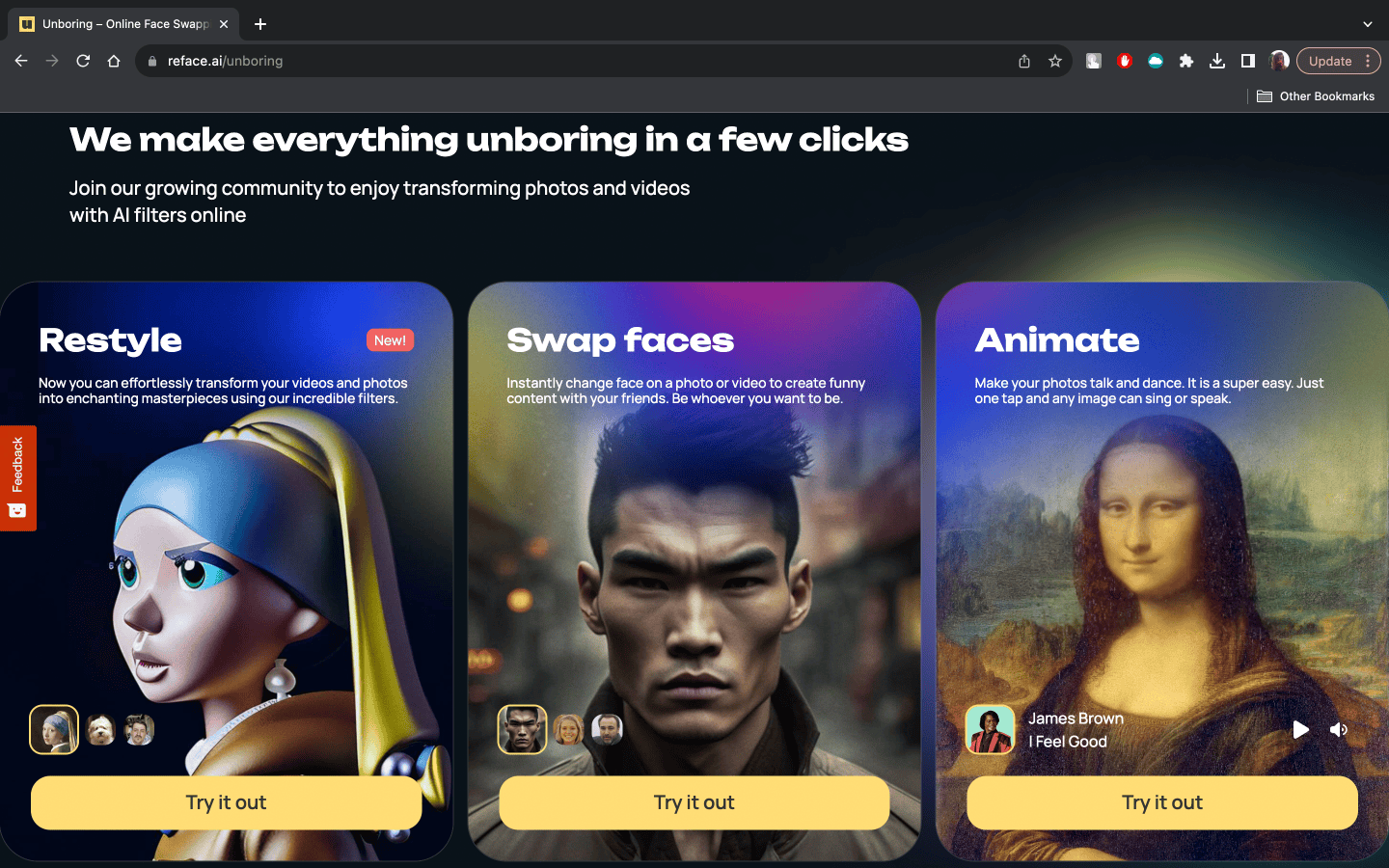
Unboring by Reface is a user-friendly web platform that lets you experience the magic of AI for yourself without any technical training involved. Whether you want to turn still images into singing animations, play around with face-swap filters, or turn your furry friend into a cartoon character, Unboring has everything you need all in one place.

It offers a fun and easy way for you to experiment with synthetic media in a way that is creative and harmless. So, while you might not create a perfect deepfake, you’ll still have lots of fun. Get in touch with your creative side and try Unboring today!

